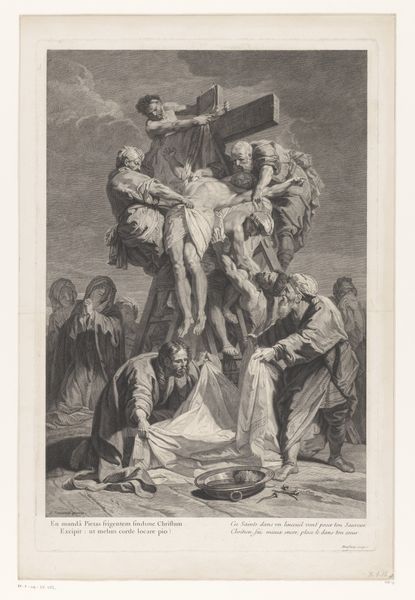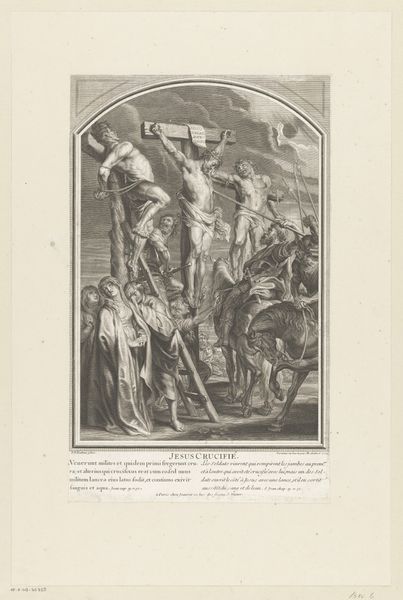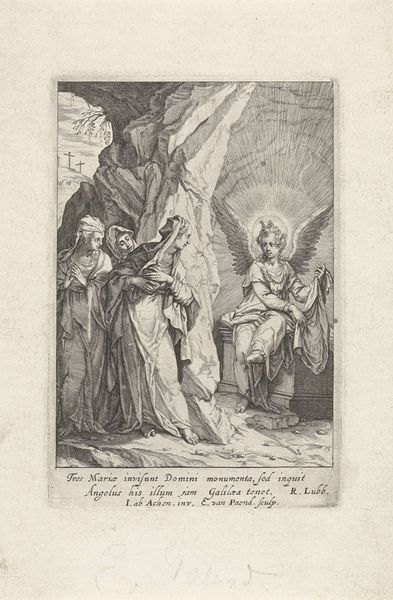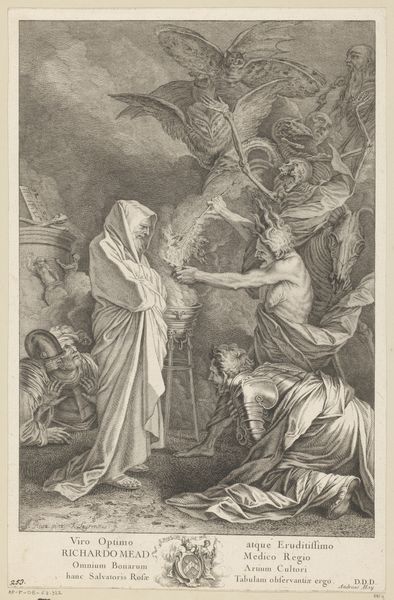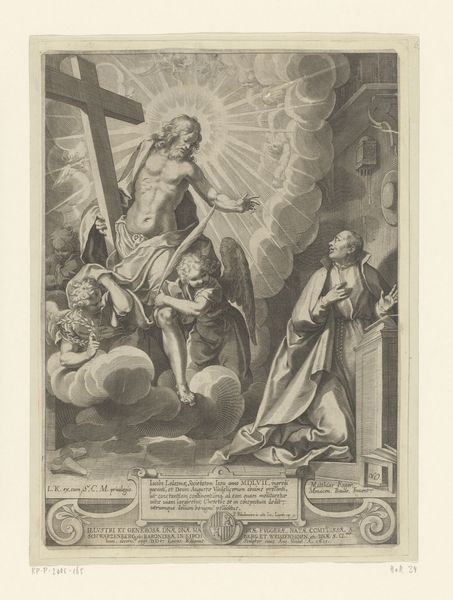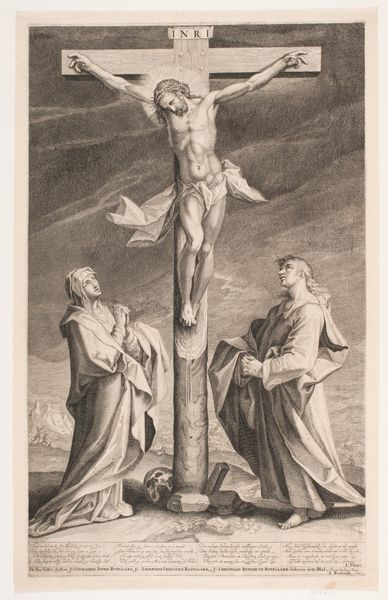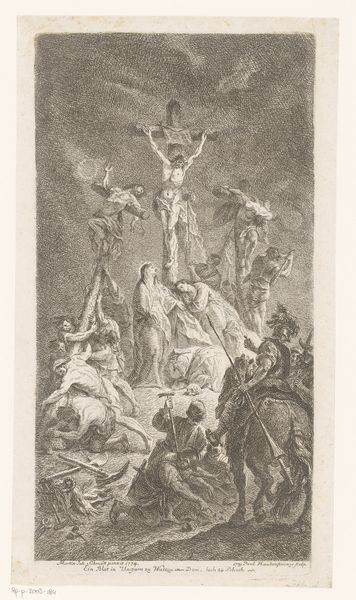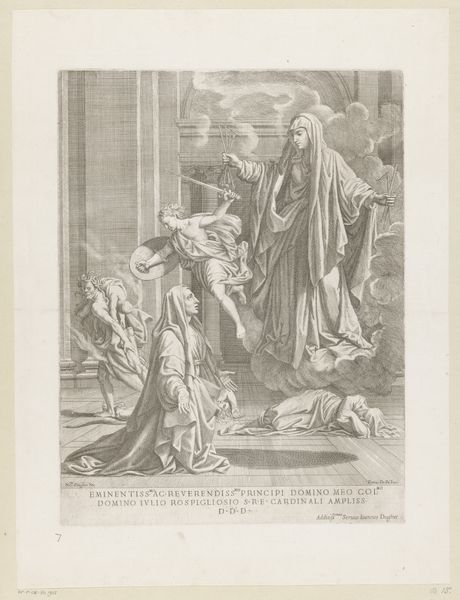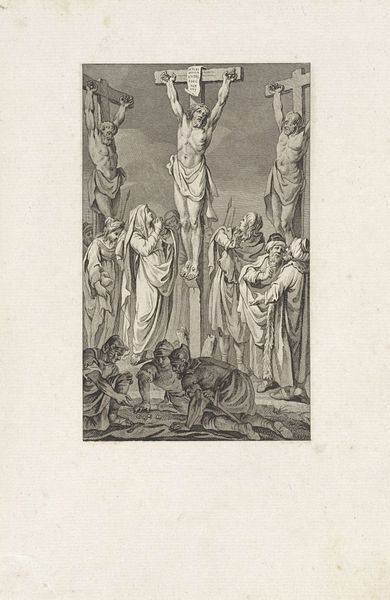
Kruisiging met Johannes, Maria en Magdalena aan de voet van het kruis 1638
0:00
0:00
print, etching
#
narrative-art
#
baroque
# print
#
etching
#
figuration
#
history-painting
Dimensions: height 514 mm, width 310 mm
Copyright: Rijks Museum: Open Domain
Curator: Here we have a print titled "Crucifixion with John, Mary and Magdalene at the Foot of the Cross," created around 1638 by Pierre Daret. It's an etching, currently held at the Rijksmuseum. What’s your initial reaction to it? Editor: The mood is overwhelmingly sorrowful. The elongated figures, coupled with the stark contrasts of light and shadow, definitely emphasize the drama inherent in the subject matter. The composition seems designed to push your eye upwards. Curator: Absolutely. Consider the symbolism, though. We see Mary Magdalene at the foot of the cross, a figure representing repentance and devotion. John, typically associated with unwavering faith, stands stoically. And, of course, Mary, the mother, represents immense sorrow. The scene collectively underscores the suffering but also elements of hope. Editor: But look at how Daret uses line to create that emotional weight. See the etched lines that delineate the musculature of Christ on the cross, how it gives us both weight and suffering in equal measure? The diagonals of the cross itself create a tension across the composition. Curator: And those billowing clouds – so typical of Baroque art – heighten the scene’s theatricality. I think we’re meant to see it not just as a historical event but as a representation of the human struggle between faith and doubt. What stands out to you most about its artistic structure? Editor: The way the figures are arranged seems consciously theatrical. They’re almost like players on a stage, drawing the viewer into the emotional core of the scene, mirroring back. Even the contrast between light and dark pushes us into that very Baroque, emotional intensity. Curator: It makes one contemplate the weight of such potent symbols repeated so many times, throughout centuries of visual culture. Even as times change, they clearly can retain an affective, perhaps even transformative, power. Editor: Indeed. Thinking about it, this piece offers a very striking demonstration of form enhancing the thematic force of religious symbolism, that kind of balance and symmetry still resonate.
Comments
No comments
Be the first to comment and join the conversation on the ultimate creative platform.
